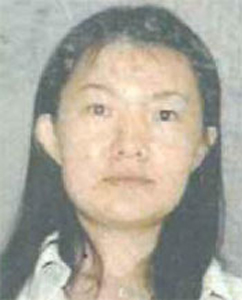Program Information
Landmark and ROI-Enhancement-Assisted Inter-Patient Deformable Registration of 3D Bladder CT Images
y wang1*, G Sharp2, A Jackson3, Z Saleh4, A Apte5, H Veeraraghavan6, J Deasy7, (1) ,,,(2) Massachusetts General Hospital, Boston, MA, (3) Mem Sloan-Kettering Cancer Ctr, New York, NY, (4) Memorial Sloan Kettering Cancer Center, Manhattan, NY, (5) Memorial Sloan-Kettering Cancer Center, New York, NY, (6) Memorial Sloan Kettering Cancer Center, New York, New York, (7) Memorial Sloan Kettering Cancer Center, New York, NY
SU-E-J-64 Sunday 3:00PM - 6:00PM Room: Exhibit HallPurpose: Deformable image registration (DIR) of the pelvis, and in particular, the bladder, is known to be a difficult problem. We tested several pre-processing strategies to improve the effectiveness of registration.
Methods: We studied the use of automatically-derived landmarks (LMs) and enhanced regions of interest (ROIs) to improve existing DIR algorithms, such as B-Spline. The three outstanding LMs in the bladder are the two ureteral orifices and the internal urethral orifice.
We used 10 pelvic CT image sets with bladders of different shapes (either full or empty). Inter-patient registration was performed using four methods:
1. B-Spline, standard intensity-based B-Spline registration;
2. LM B-Spline, B-Spline registration with forced matching of corresponding landmarks;
3. ROI enhancement (ROI Enh) B-Spline, signal intensity of the bladder ROI enhanced during pre-processing to weigh the bladder more when registering;
4. LM + ROI Enh B-Spline.
Results: 1. B-Spline DIR resulted in poor registration due to the variance of shapes and sizes among the bladders.
2. LM B-Spline achieved the least distance between landmarks, albeit with poor Dice coefficient values and high registration uncertainty. This method is reliant on the number of landmarks.
3. ROI Enh B-Spline achieved a higher Dice coefficient and lower registration uncertainty but larger LM distance, when compared to LM B-Spline. This method is most applicable where ROI volume boundary alignment is sufficient.
4. LM + ROI Enh B-Spline achieved the best result, when taking into account of all the quantitative and qualitative measurements.
In general, we observed a tradeoff between achieving a reliable bladder registration and reliable registration of other parts, such as bones.
Conclusion: We developed three methods to improve DIR by combining existing approaches. For DIR of bladders, the application of LMs plus ROI Enh B-Spline achieved the best overall results, based on quantitative results and physician opinion.
Contact Email:


